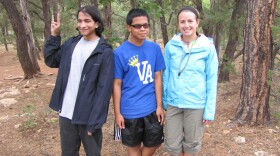Every experienced hiker, river runner and climber I know has made mistakes of one sort or another. Usually it takes a string of them to get into serious trouble, but even then some people manage to pull it off. Whether they do so on skill alone or pure luck is never clear. I once found myself deep in the Grand Canyon clinging to the side of a cliff, unable to move up or down.
That morning I had been following a passage cut through the inner gorge by Hance Creek. Reaching a pour-off I turned back to search for a bypass to round the drop and found two options. One route involved a steep trudge up hundreds of feet of talus, the other was a much shorter climb up a face of broken Vishnu schist. I started up the cliff, and 50-feet above the streambed found myself in a bind. It was too dangerous to keep going and too risky to turn back. I was stuck.
My wife, Sandy, had warned me not to do anything dangerous, and my response was, “I don’t take chances.” If it’s dangerous I back off, but I’ll do things where the margin of safety narrows. And this time the margin had narrowed to a sliver. To reach the top required only two or three moves — so close I almost convinced myself to take a chance. Then I looked at the perpendicular wall below, and knew the difficult spots I had passed would be even harder going back. Realizing I had to decide soon before my muscles began to tire, I surprised myself by praying, just a few words under my breath. About the only time I pray, it seems, is when I’m caught in some sort of predicament. I guess that makes me a member in good standing of what might be called the Church of the Tight Bind.
Several years before, J.D. Green, a veteran canyon explorer, had gotten himself into an even tighter bind. He had reached the summit of Osiris Temple after a solo climb in winter, and late in the day began to descend on a series of rappels. While roping down the cliff he dropped his flashlight before reaching the next ledge. Night had come early, and he rigged his rope for the next rappel. Peering into the dark void he was unable to see if it reached the bottom. So he decided to wait for morning.
“It was getting so cold up there,” he told me. “It was zero degrees on the South Rim. Everything had iced up. I opted to make an emergency fire and suffer through the night.” Caught on a ledge with only a few bushes for fuel, he was unable to get anything to light. “I was overextended,” he said, “very overextended.” Desperate, he realized his only chance was to burn his climbing sling. He used the nylon webbing start a fire, saving just enough for the final rappel in the morning. “It rained the next day,” he added, “I was saturated, just saturated. I planned on taking three days, but it took six.”
Clinging to my own cliff, I reached a decision and began easing back down the rock face. By testing each handhold before shifting weight onto it, feeling for each unseen foothold below, thinking through each move, I was able to reach the creek bed without incident. I had managed to hang on to that thin margin of safety. After a few gulps of water the alternate route no longer looked so long, and I continued on to Sockdolager Rapid.







